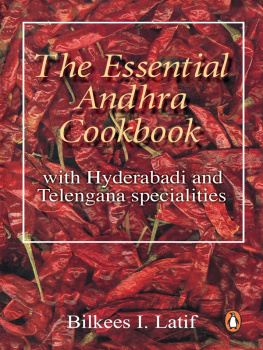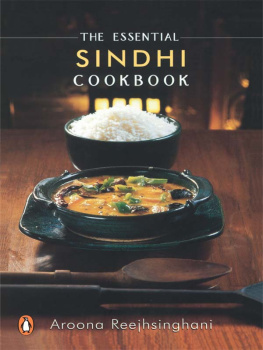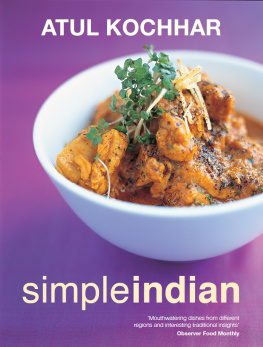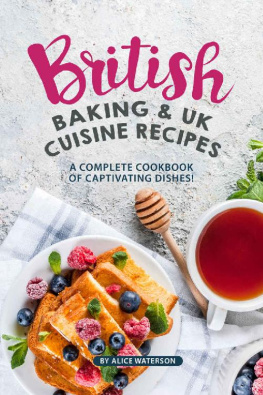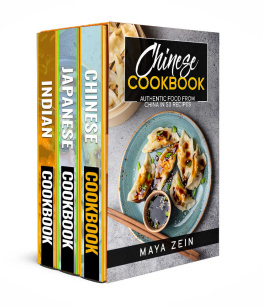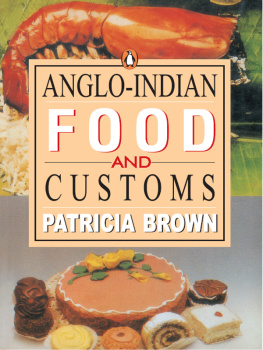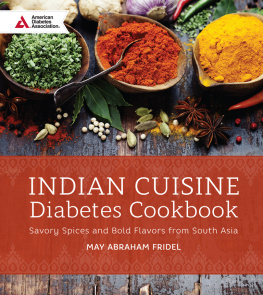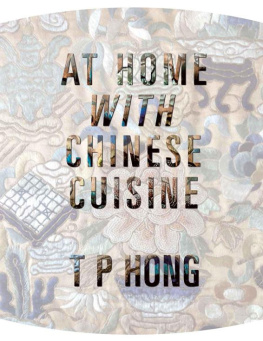It was over lunch with David Davidar one day, roughly a year ago, that the idea of my guest editing a series on Indian cookery came up. India has one of the most diverse cultures in the world, not to mention one of the oldest, and I have always fretted about the fact that the younger generation seems to have very little understanding of this. So to put together a series of books that would enshrine and perpetuate the different flavours of India struck me as not merely an interesting project but a necessary one. I had already written my Parsi Food and Customs and we now decided to focus on the states of India; each book within the series would set out the traditional cuisine of a state along with a commentary on the kind of food served at particular occasions such as festivals and religious as well as ritualistic ceremonies.
When it came to finding an author for the book on Andhra cuisine, we didnt have to look far. Bilkees I. Latif is well known for her hospitality and the excellence of her table. She is also a person who commands respect for the work she does with disadvantaged children and war widows in Andhra and elsewhere in the country. With her usual enthusiasm and tireless energy she took on the task of exploring the riches of the Andhra kitchen and faithfully recording both traditional and improvised recipes that comprise modern Andhra cooking. She has taken care to include regional variations of each dish as well as indicating the distinguishing characteristics of sub-cuisines such as the Telengana and the Hyderabadi.
I am sure you will enjoy reading this book and cooking with its help as much as I have enjoyed helping to put it together in my capacity as the series editor. And certainly, both Penguin and I would welcome your response to the series as well as to this particular title.
Bhicoo J. Manekshaw
New Delhi
Introduction
Daawat-e-Hyderabad: Biryani to Badaam ki Jaali
I have noticed in Hyderabad that a conversation usually ends with a reference to food or a discussion on it! It is often remarked that here one lives to eat!
Not many know that the flag of the earlier Hyderabad State actually had a kulcha or bread embroidered on it. Thereby hangs a tale which goes back to the first Nizam of Hyderabad, Asaf Jah I, a brilliant general who was sent from Delhi to Hyderabad by Emperor Aurangzeb in 1713. Before leaving Delhi, he went to meet Hazrat Nizam-ud-din Aulia who invited him to share his meal. He ate some of the kulcha (unleavened bread), and the saint pressed him to take more. After taking seven kulchas he said he was most grateful but could take no more. He wrapped them in a yellow cloth and was about to leave when the saint blessed him, saying, You and your descendants will rule the Deccan for seven generations. And so it came to be! During the rule of the seventh Nizam, the state of Hyderabad became a part of Andhra Pradesh. Like the cloth in which he had wrapped the kulchas, Asaf Jah had a yellow flag for the state of Hyderabad. On it was his dastar or headdress, embroidered in gold, and below it was the kulcha!
Over time, people from different regions and various communities have settled in Hyderabad and enriched its cuisine. Parsis, Kayasths, Marwaris and Anglo-Indians, among others, brought with them their traditions and their food and helped create the cultural ethos that is the special charm of Secunderabad and Hyderabad, the twin cities. This process of assimilation is at the heart of the Hyderabadi culture and cuisine.
In earlier days each meal, especially on festive occasions, was planned and served elaborately. While these days one is more accustomed to buffet or chowki dinners and only occasionally, a formally seated one, earlier when the family gathered for special occasions one would lay out the dastar khawn. In the old city one can still see these hanging in the shops, made of red material printed with signs of cutlery and crockery. White chaani sheets of cloth would cover the carpet in long runners about six or seven feet wide and the food would be laid out down the centre with the dishes repeated the entire length. Diners sat on both sides and Gods name was always invoked before starting a meal.
A study in contrast is dinner at the community centre of the Suleimani Bohras. Groups of six or eight sit around a large metal thaal placed on top of a 15" base. The meal starts with a dash of salt, followed by a sweet dish and then the main course. A special favourite is Bakra Khori which is a bakra or lamb stuffed with a chicken and hard-boiled eggs and surrounded by biryani.
At the home of Sir Akbar Hydari who was Prime Minister from 1936 to 1941, this was the norm for family meals at festivals. For official banquets Lady Hydari always had a formal sit-down dinner with the requisite crystal and cutlery and different courses. In the early decades of this century Nawab Salar Jungs table was also renowned for its excellent cuisine. So particular was the Nawab about his food that whenever he went to Mumbai (in his private saloon by the Nizams state railway) he would stay at the Taj Mahal Hotel, but special food would also be cooked in the saloon by his own cooks and delivered at the hotel! On a normal day the table at his dewdi or palace in Hyderabad was laid out for forty people. There would be five or six Western courses followed by an equal number of Hyderabadi courses, and then the desserts. Finger bowls followed and then fruit. Salar Jung III was a frugal eater himself, and never had breakfast, but his guests as well as his staff had a lavish one! Plates were changed after every course and only the best quality food and sometimes wine, were served. When members of his family went on a hunt or shikar, they always had the servants and the whole entourage sit at a dastar khawn and eat together as an important act of belief in the brotherhood of man. Each had his own sphere of work but to break bread together for master and worker was important.

